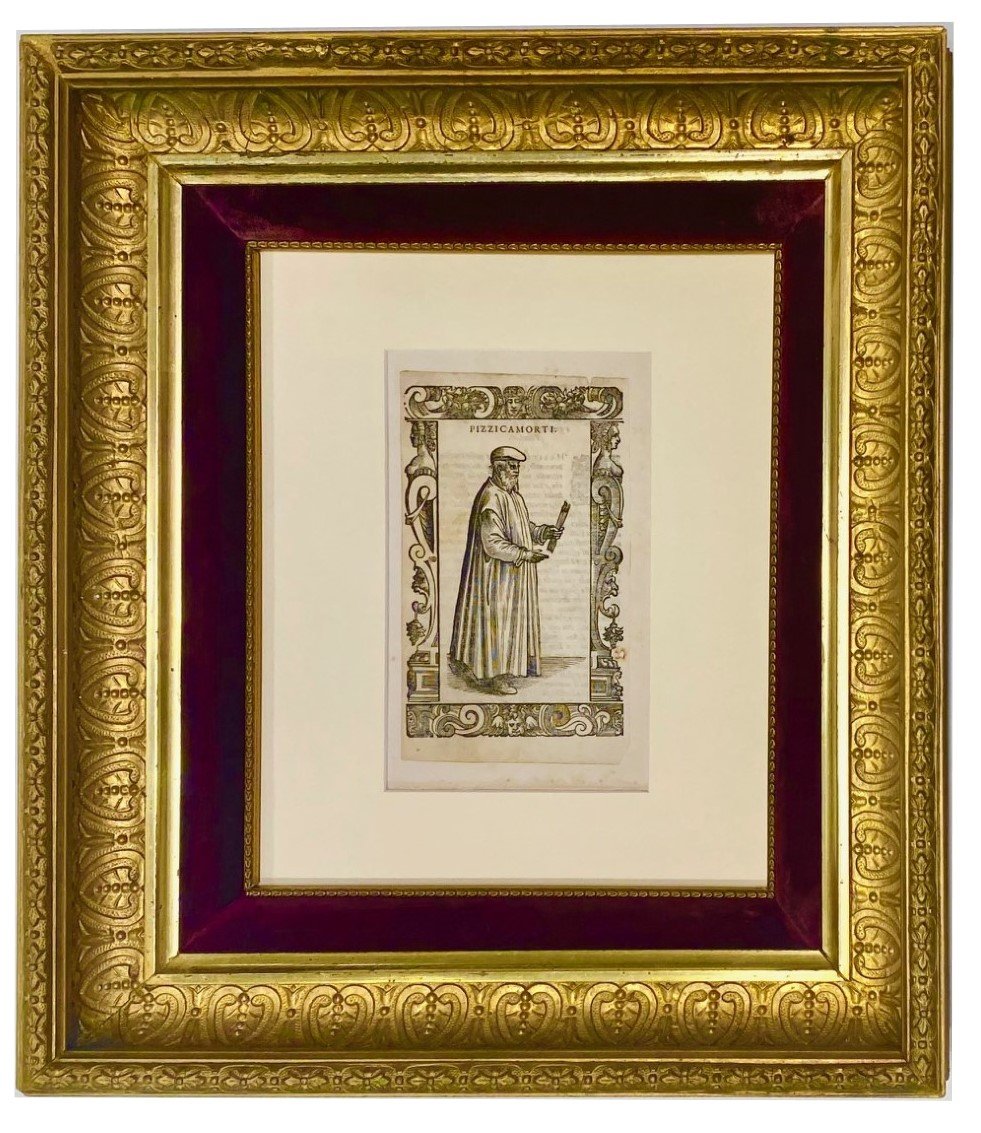While on a trip home to Minnesota, I found a vintage print that belonged to my grandmother! As a framer, I knew it needed some conservation work and a fresh presentation. So, I took it back to my Seattle shop for the full treatment:
A vintage print handed down within the family has unknown origin, but remains sentimental.
Both the matting and the frame had seen better days.
The original black floral frame had myriad scratches and dings, which stuck out against the dark background. The grey mat was warping right out of the frame due to moisture, adding to the dingy look.
The backside of the frame, complete with paint splatter from some unknown past project.
The first order of business was to take everything apart to see what could be salvaged (if anything), and to take stock of any unexpected findings.
In addition to the normal fitting nails we often see, I found this interesting makeshift solution.
I found one of my grandma’s sewing pins was helping hold in the backboard! Old pieces like this can have hidden discoveries waiting inside…
This was the back side of the backboard!
…Like this! When I flipped over the backboard I realized it was a repurposed poster from a Wisconsin county fair! I hate that the year was cut off but suspected the ad is from the late 1950’s or early 1960’s.
Remnants of old tape cling to the edges of the vintage print.
I removed the artwork from the old frame and then began carefully dislodging the tape from around the edges. Luckily, most of the tape was old enough that the adhesive had dried out and flaked off easily.
I removed everything I could, leaving only small amounts of tape remnants in a few places.
Here we see the print by itself, with the matting and tape fully removed. Notice the lighter band that runs through the middle of the art - this was caused by a slit in a nearby window causing light to hit the artwork in just that specific spot. The bleaching of the paper unfortunately cannot be reversed; but it is a good reminder about the importance of UV-protective glazing and not hanging art in direct sunlight.
Clear corners are used for securing the print to the new backboard. This solution is 100% reversible and avoids adding any new tape or adhesive. They are hidden under the new mat for a seamless look.
You can also clearly see the foxing line around where the old mat was. Foxing lines are caused by acid present in the surrounding mats. This highlights the importance of using acid-free materials, especially anything that will come into contact with your artwork.
A new mat on the vintage print hides some of the damage.
All cleaned up and ready for the trip back home: acrylic can safely be shipped through the mail if packaged correctly.
And here is the final product! A new black frame was selected that had a similar, subtle floral scroll pattern. The new off-white mat brightens up the composition and hugs the old foxing line, maximizing the image.
This sweet and sentimental piece was finished off with Optium Museum Acrylic, providing ongoing 99% UV protection as well as a no-glass look for optimal viewing pleasure. Lastly, the shatter-proof acrylic makes the trip back home even safer. Grandma would be very proud!






















